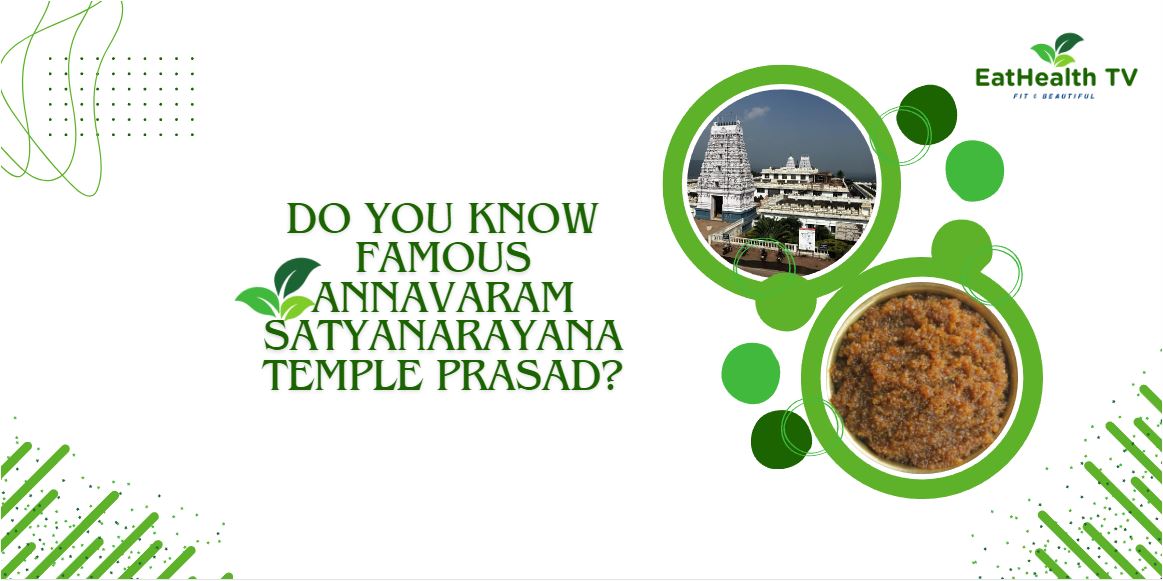How to Prepare Annavaram Satyanarayana Temple Prasad?
Divine Tradition: The Sacred Offering of Annavaram prasadam
Annavaram Satyanarayana Temple

Nestled amidst the serene hills of Andhra Pradesh, the Annavaram Satyanarayana Temple stands as a testament to faith and devotion. Amidst the rituals and ceremonies that adorn its sacred halls, the offering of Annavaram prasadam Broken Wheat Halwa shines as a beacon of tradition and spiritual significance. In this comprehensive guide, we will embark on a journey to unravel the historical importance, cultural significance, and intricate preparation of the Annavaram prasadam at the Annavaram Satyanarayana Temple.
The Legacy of Annavaram Satyanarayana Temple
Perched majestically atop the Ratnagiri Hill, the Annavaram Satyanarayana Temple commands awe and reverence from devotees and visitors alike. Dedicated to Lord Satyanarayana Swamy, this temple is not just a place of worship but a sanctuary of divine blessings. Its rich architectural heritage and the serene ambiance make it a cherished pilgrimage site in Andhra Pradesh, attracting devotees seeking solace and spiritual enlightenment.
Understanding Annavaram prasadam or Broken Wheat Halwa Prasad
Annavaram prasadam, known locally as Godhuma Rava Halwa, holds a special place in the hearts of devotees as it is offered as prasad at the Annavaram Satyanarayana Temple. This delectable sweet dish, crafted from broken wheat, jaggery, ghee, and nuts, symbolizes sweetness, prosperity, and divine blessings. Its preparation and offering serve as a sacred ritual, bridging the gap between the physical and the divine. Just as we know How to Prepare World-Famous Tirupati Laddu Prasadam?
Ingredients for Annavaram prasadam
The divine aroma and heavenly taste of Annavaram prasadam are attributed to the carefully selected ingredients and the meticulous preparation process. Let’s delve into the key components that make this prasad a culinary delight:
- Broken Wheat (Godhuma Rava): The cornerstone of the recipe, broken wheat symbolizes sustenance and wholesomeness. It serves as the foundation upon which the flavors of the halwa are built.
- Jaggery: Nature’s sweet nectar, jaggery adds a rich caramel-like sweetness to the halwa. Its deep, earthy flavor enhances the overall taste and represents the divine blessings bestowed upon the devotees.
- Ghee: The golden elixir of Indian cuisine, ghee infuses the halwa with richness and depth of flavor. Its nutty aroma and silky texture elevate the dish to celestial heights, signifying purity and auspiciousness.
- Nuts (Cashews, Almonds, Raisins): A medley of crunchy nuts adds texture and contrast to the halwa, symbolizing abundance and prosperity. Their presence in the prasad represents the bountiful blessings showered upon the devotees by the divine.
- Cardamom: The fragrant spice of the gods, cardamom lends its subtle, citrusy aroma to the halwa. Its warm, comforting flavor ties the ingredients together, imparting a touch of divine grace to the prasad.
Preparing Annavaram prasadam Broken Wheat Halwa – A Sacred Ritual
The preparation of Annavaram prasadam Broken Wheat Halwa at the Annavaram Satyanarayana Temple is not merely a culinary endeavor; it is a sacred ritual steeped in tradition and devotion. Let’s unravel the intricate steps involved in crafting this divine offering:
- Roasting Broken Wheat: The journey begins with dry-roasting the broken wheat until it emanates a nutty aroma and turns golden brown. This process enhances the flavor and texture of the halwa, setting the stage for a culinary masterpiece.
- Boiling Water: In a separate vessel, water is brought to a gentle boil, and the roasted broken wheat is added. It is then simmered until the grains are soft and tender, absorbing the essence of purity and divinity.
- Preparing Jaggery Syrup: Meanwhile, a luscious syrup is prepared by melting jaggery in water, infusing it with the sweetness of nature. The syrup is strained to remove any impurities, ensuring that only pure, unadulterated sweetness finds its way into the halwa.
- Combining Ingredients: The cooked broken wheat is then introduced to the warm embrace of the jaggery syrup, and the two merge into a harmonious union. Gently stirred over a low flame, they mingle and meld, creating a symphony of flavors and aromas.
- Adding Ghee and Nuts: As the halwa begins to thicken and take on a luscious texture, ghee is added to impart richness and shine. A generous handful of nuts is tossed in, their crunch adding a delightful contrast to the velvety halwa.
- Garnishing: Finally, the halwa is adorned with a sprinkle of cardamom powder, infusing it with the divine essence of this sacred spice. A garnish of golden raisins, toasted almonds, and cashews adds the finishing touch, elevating the halwa to celestial heights.
The Spiritual Essence of Annavaram prasadam Broken Wheat Halwa Offering
Beyond its culinary appeal, the offering of Annavaram prasadam Broken Wheat Halwa at the Annavaram Satyanarayana Temple holds profound spiritual significance. It symbolizes the devotee’s devotion, humility, and gratitude towards the divine. By partaking in this sacred offering, devotees seek blessings, prosperity, and spiritual fulfillment, forging a deeper connection with the divine.
Conclusion
In conclusion, the tradition of offering Annavaram prasadam Broken Wheat Halwa at the Annavaram Satyanarayana Temple is a cherished ritual that transcends culinary boundaries. It is a testament to the enduring bond between humanity and the divine, a gesture of reverence and devotion that has stood the test of time. As devotees partake in this sacred offering, they imbibe the sweetness of divine blessings, enriching their spiritual journey and fostering a deeper connection with the divine.
May the tradition of Annavaram prasadam Broken Wheat Halwa continue to flourish, spreading joy, harmony, and spiritual fulfillment to all who partake in its divine essence.




